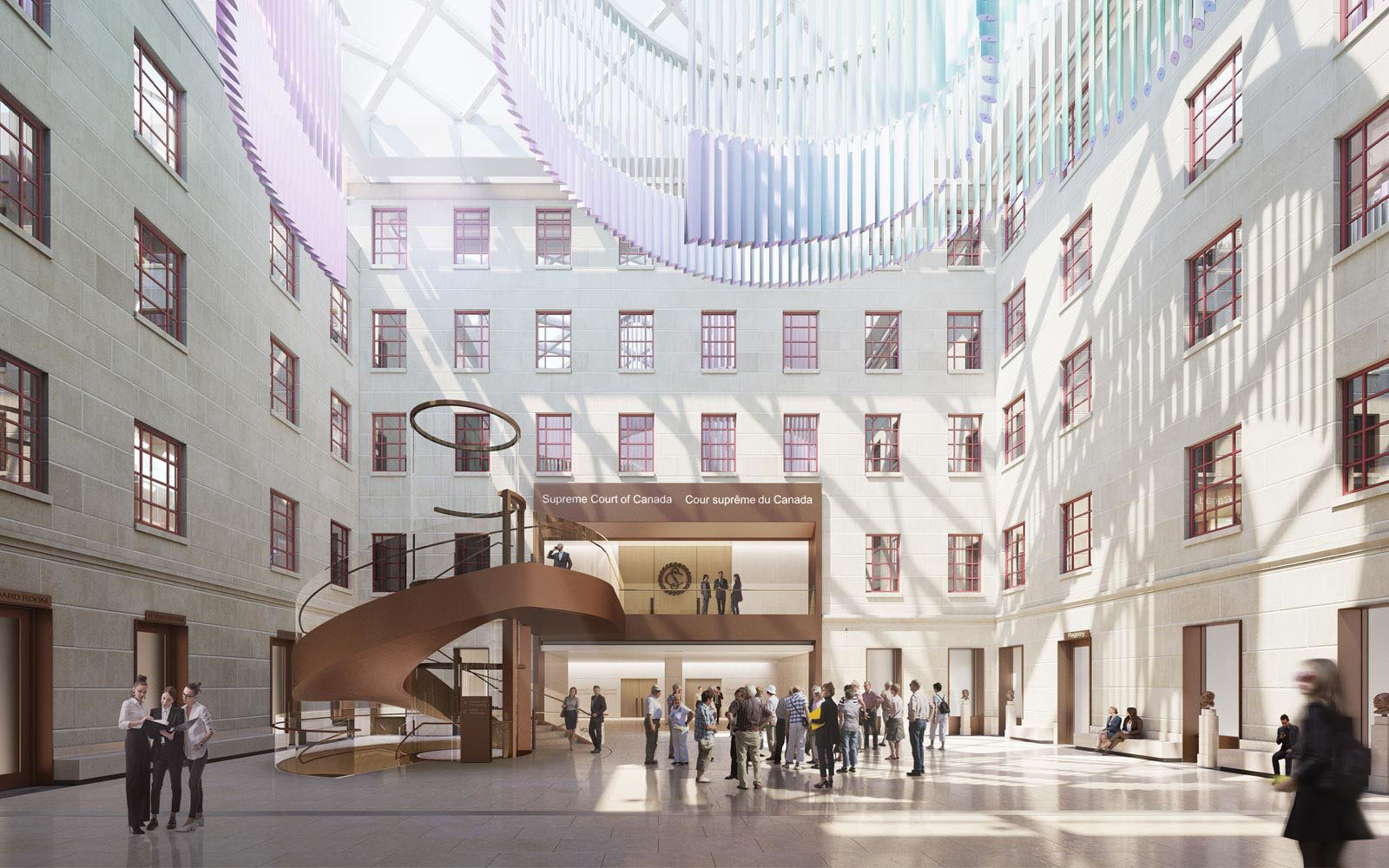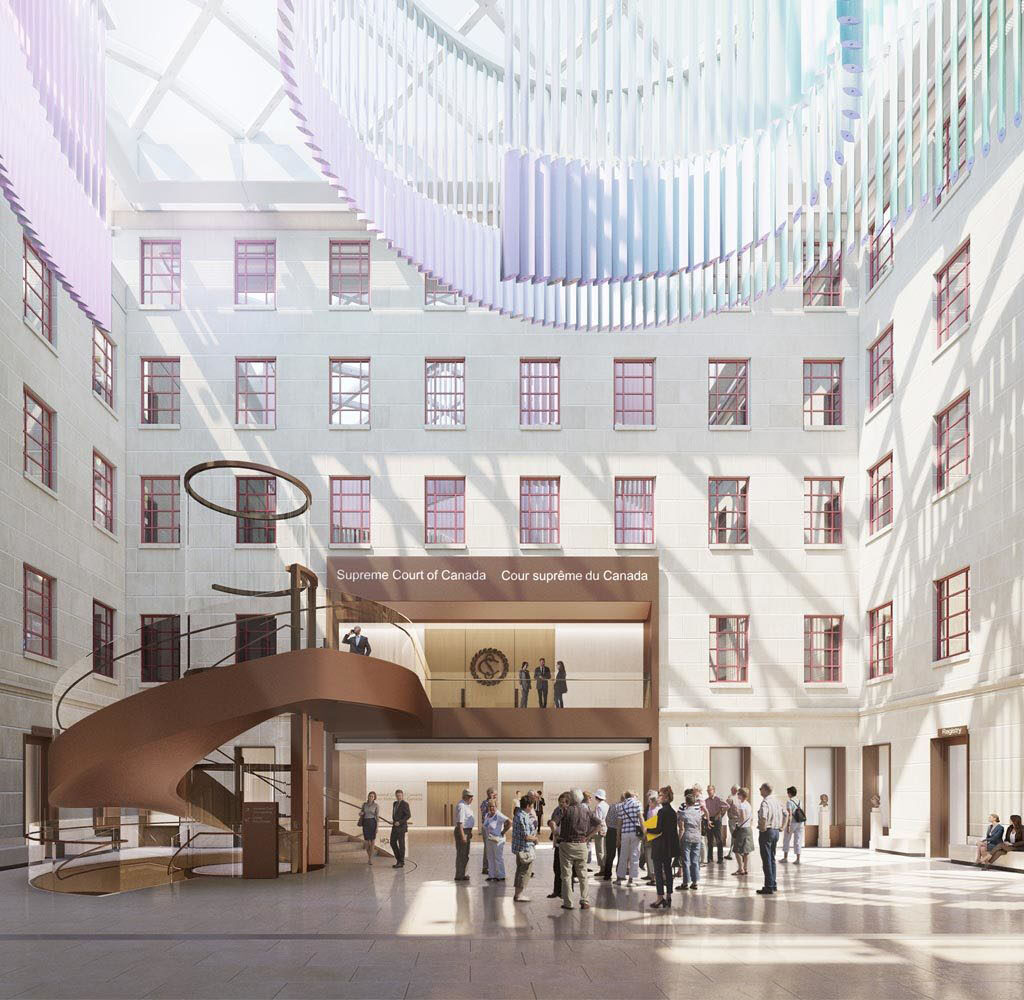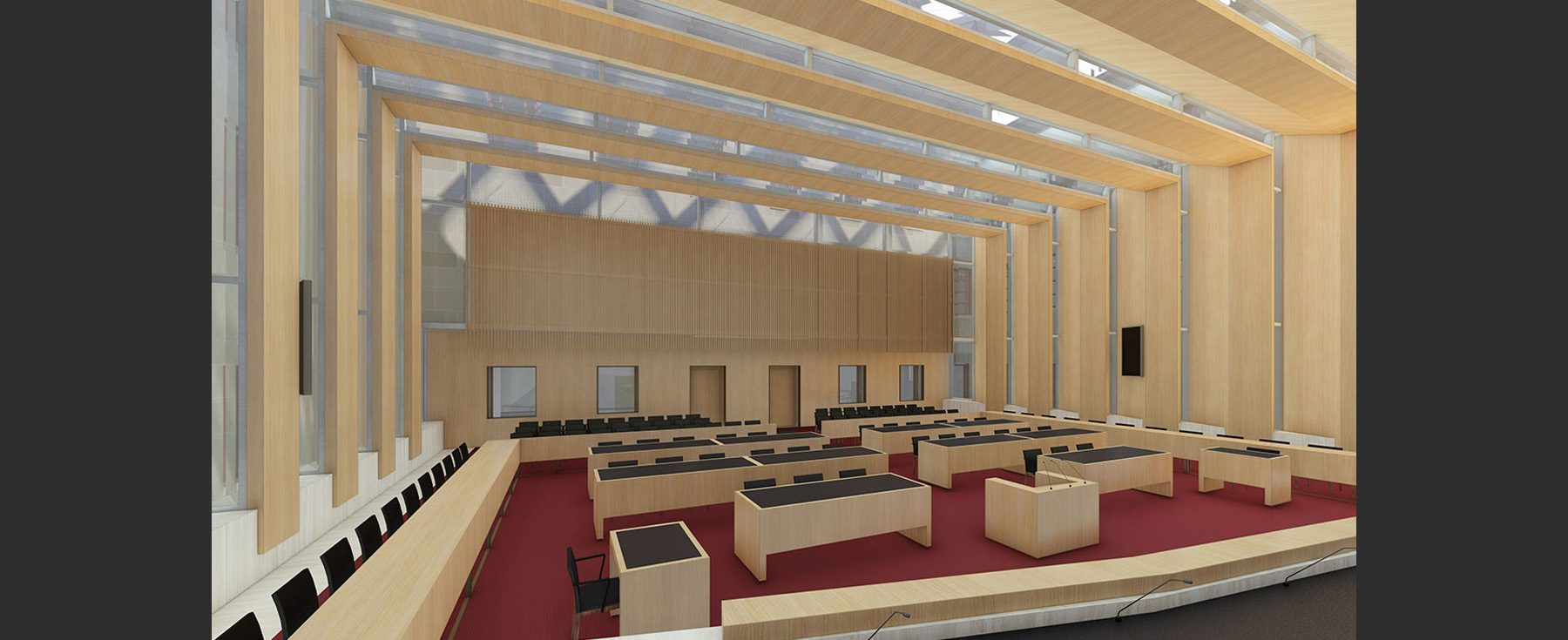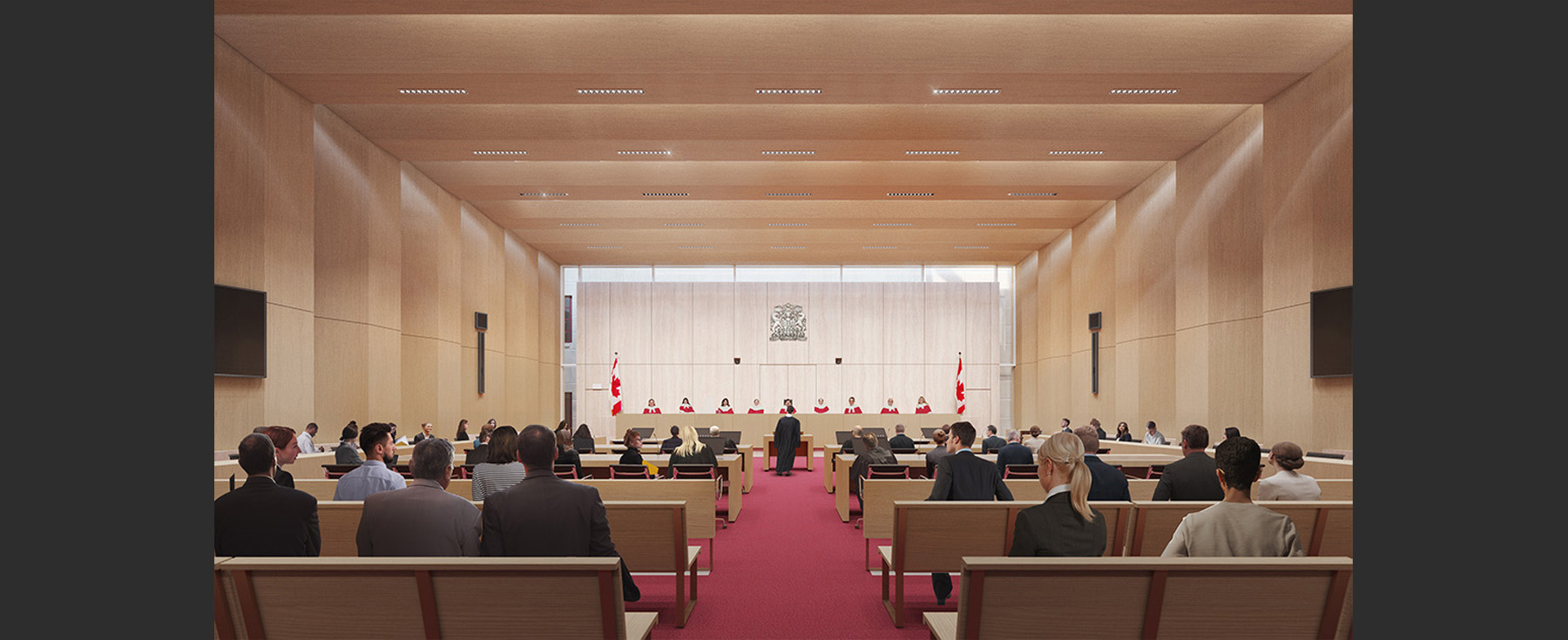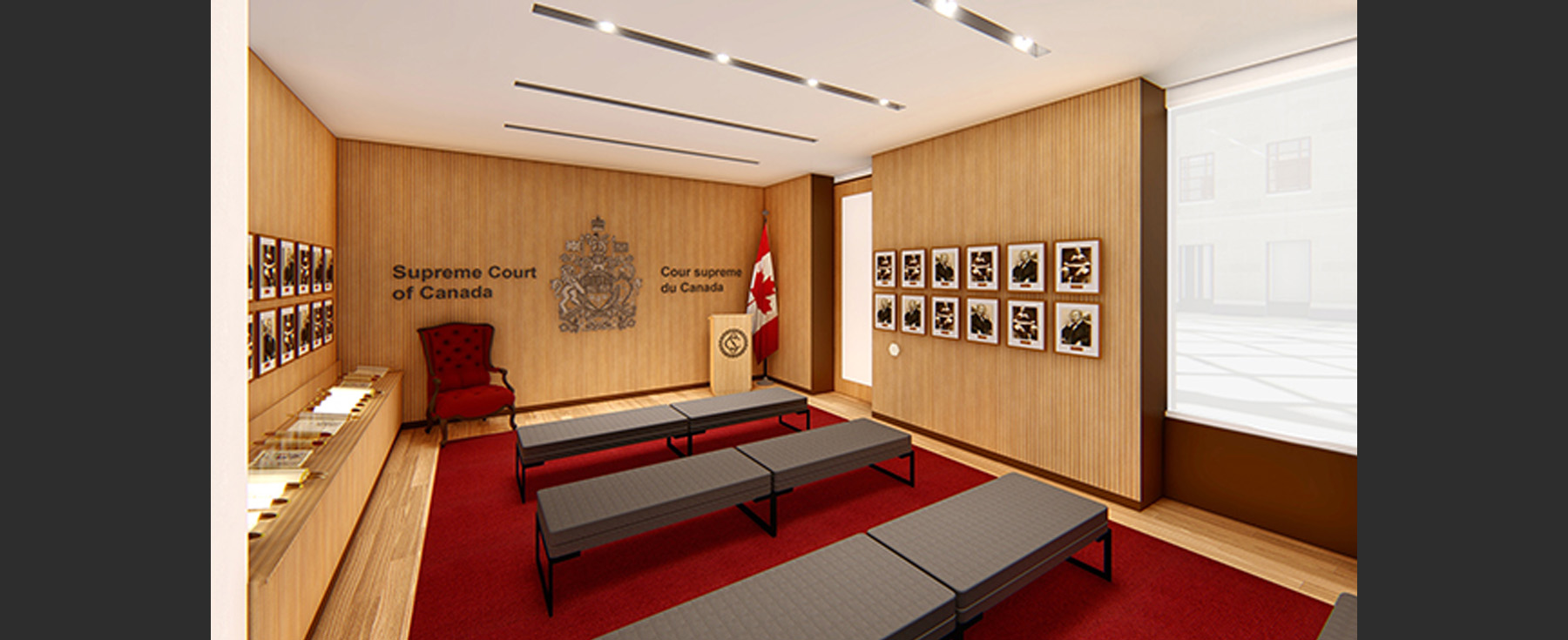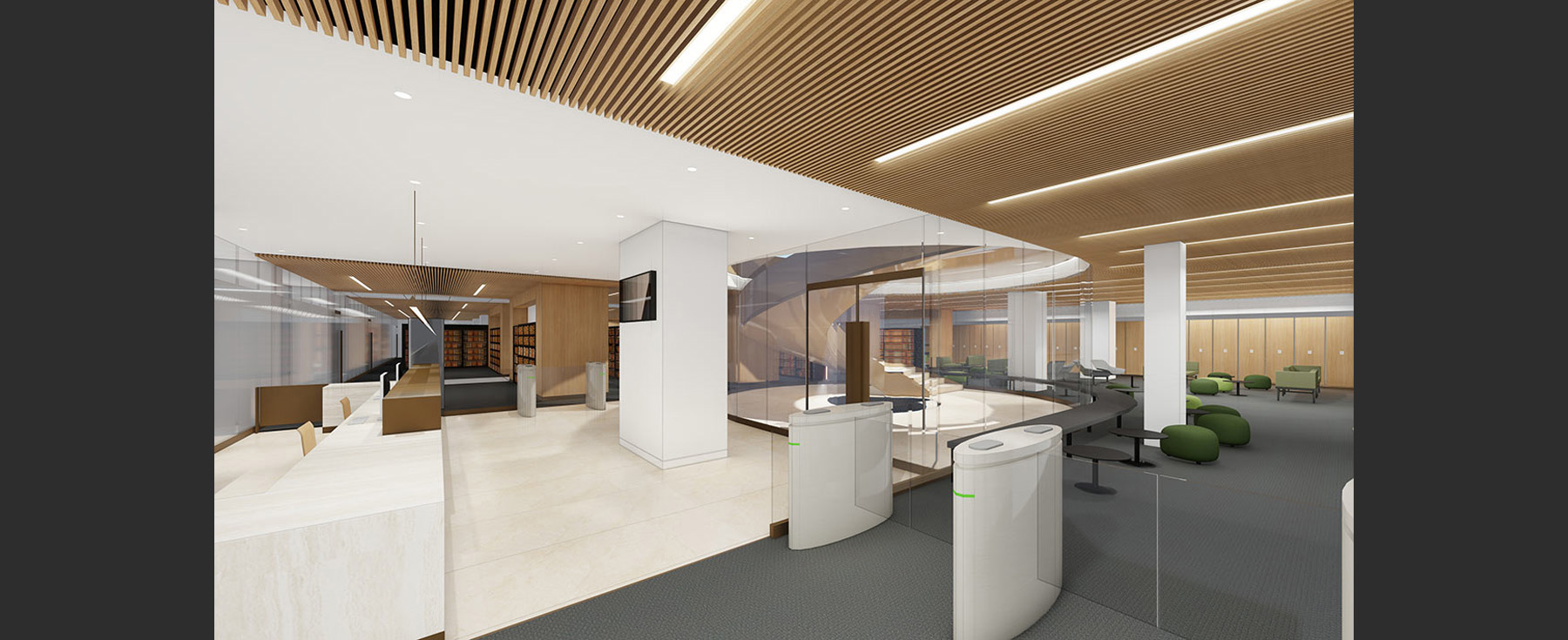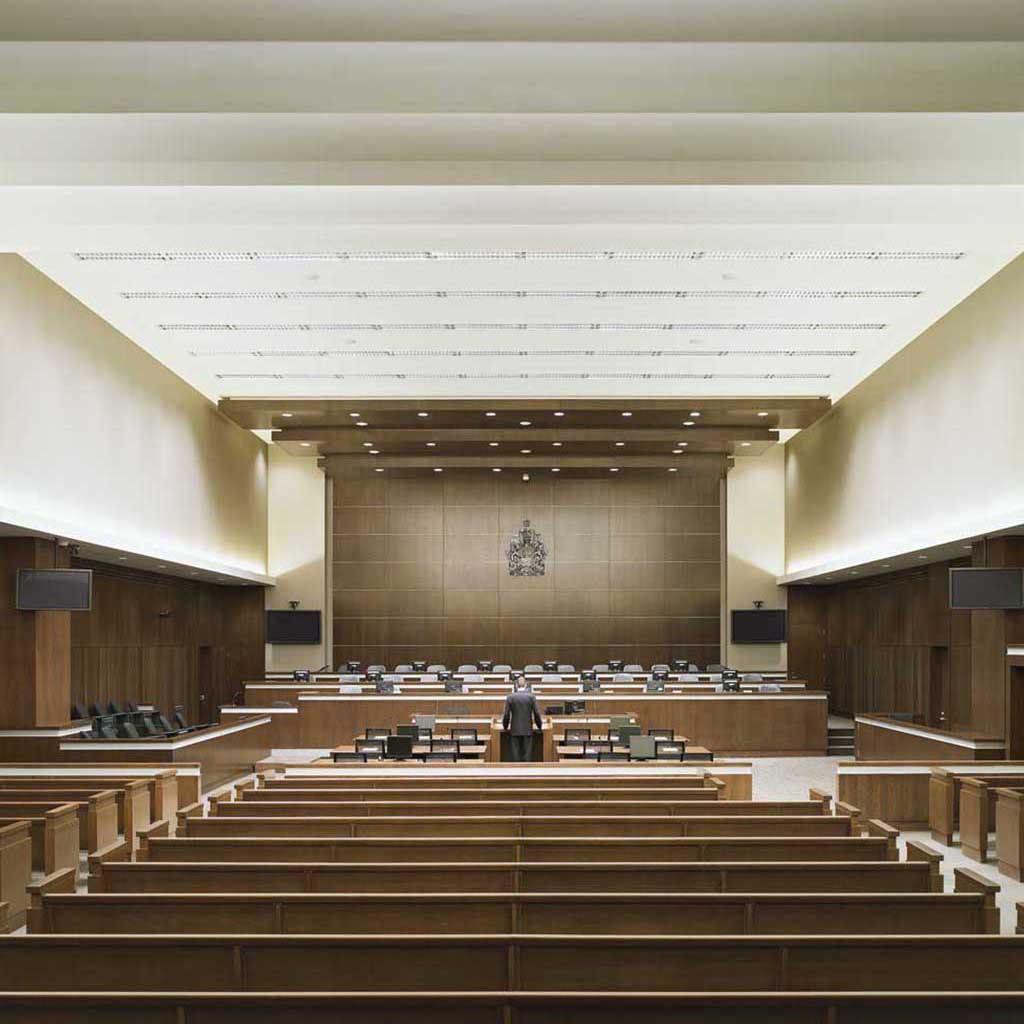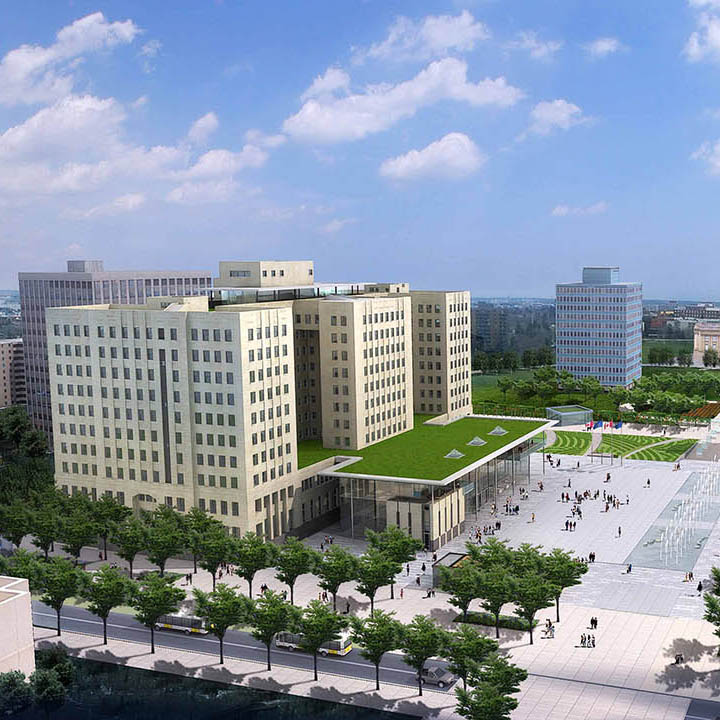Part of Ottawa’s Judicial Precinct, the West Memorial Building is a seven-storey federal heritage landmark occupying an entire city block along Wellington Street. Clad in stone and connected to the East Memorial Building through the historic Memorial Colonnade, the complex was built to honour Canada’s World War II veterans and to support their reintegration into the workforce.
Vacant since 2008 and never fully renovated, the building required a complete rehabilitation to meet contemporary needs while preserving its cultural significance.
Through a competitive process, Kasian, in joint venture with Moriyama Teshima Architects as Regenerate 344, was selected to lead the modernization. Once restored, the West Memorial Building will temporarily house the Supreme Court of Canada and Federal Courts during the eight-year rehabilitation of their permanent home, before eventually becoming office space for federal employees. This dual program required a design that could uphold the complex requirements of a judicial facility while remaining adaptable for future government office use.
The scope addressed security, accessibility, seismic resilience, sustainability, health and safety, heritage conservation, and modern technology. Judicial architecture demands unique spatial typologies to protect the integrity of legal proceedings and ensure the safety of all participants. Meeting these challenges required close collaboration with the Federal Heritage Buildings Review Office (FHBRO), the National Capital Commission, and an interdisciplinary team of engineers, consultants, and stakeholders.
Every system in the building will be new, including a full rehabilitation of the concrete structure and beams to meet seismic standards. The Lyon Street façade was designated as the primary public entry, creating a prominent and accessible entrance aligned with the Memorial Colonnade. This approach strengthens the building’s civic presence and communicates the importance of the Supreme Court. A new public terrace with integrated stairs and ramps further enhances accessibility.
Inside, the Grand Hall has been inserted into a former exterior lightwell. Designed to welcome visitors and host events, it features a dramatic spiral staircase, a glass elevator, and a light-and-sound installation inspired by the Aurora Borealis. This gesture connects to Canada’s northern identity and creates a symbolic public space.
A second transformed lightwell houses the courtroom, where timber portals define the space and mediate natural daylight. Referencing both the authority of democratic institutions and the wood finishes of the existing Supreme Court, the use of timber reinforces warmth and dignity while marking a contemporary interpretation of judicial architecture.
On the exterior, the copper roof was replaced and the stone envelope repointed. Improvements to the envelope, including an interior layer to all 800 heritage windows, ensure the building meets stringent energy performance standards while preserving its historic character.
Combining reverence for history with a forward-looking approach to heritage, sustainability, and functionality, one of Canada’s most important civic landmarks is being restored as a flexible and enduring institution.
EXPLORE MORE
We’d love to get to know you
Get in touch
"*" indicates required fields
Get in touch
Share

